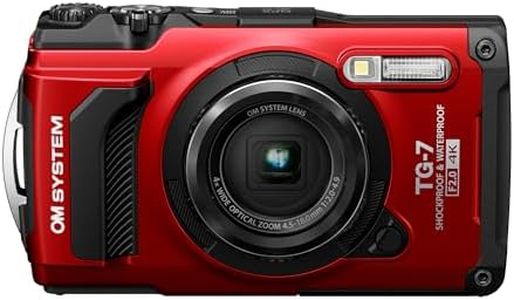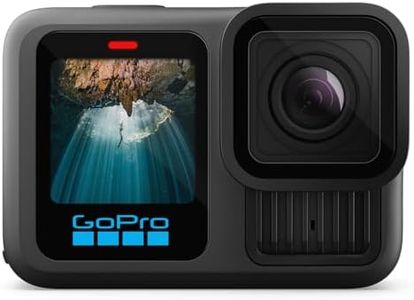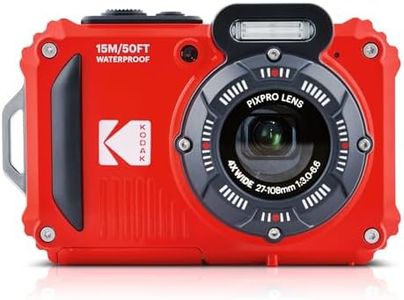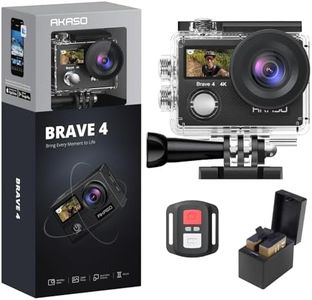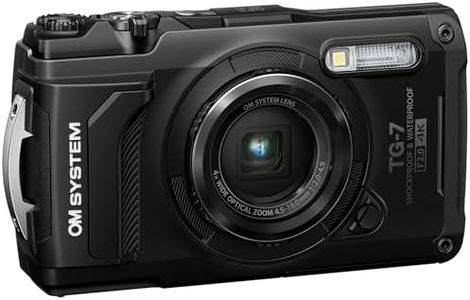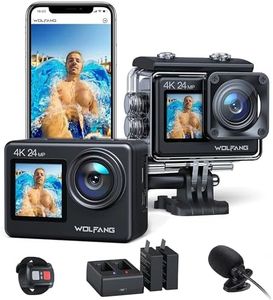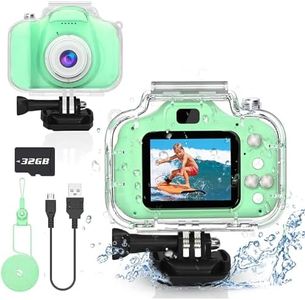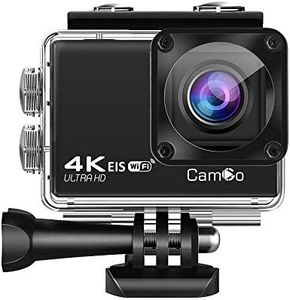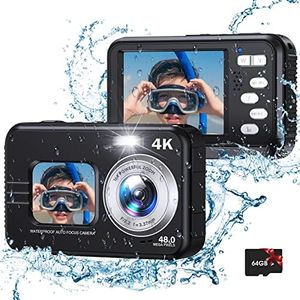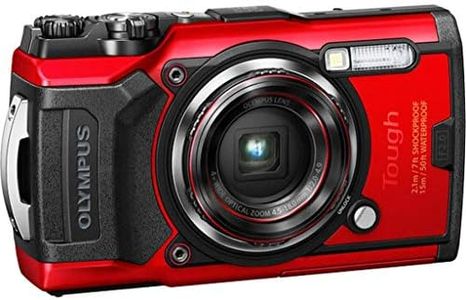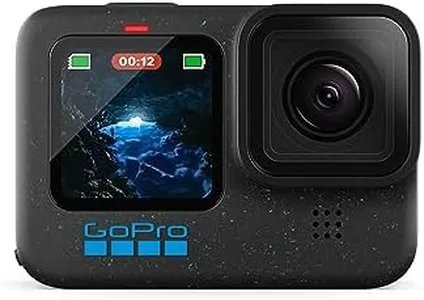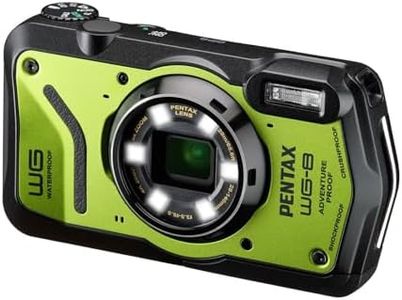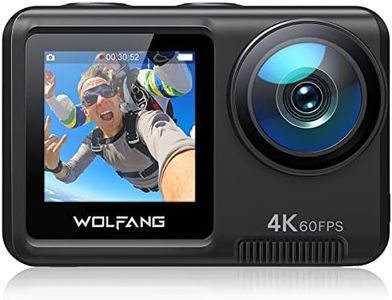We Use CookiesWe use cookies to enhance the security, performance,
functionality and for analytical and promotional activities. By continuing to browse this site you
are agreeing to our privacy policy
10 Best Waterproof Digital Cameras
From leading brands and best sellers available on the web.By clicking on a link to a third party's website, log data is shared with that third party.
Buying Guide for the Best Waterproof Digital Cameras
Choosing a waterproof digital camera is all about balancing your adventure needs with ease of use and performance. The best camera for you depends on where you plan to use it, like for snorkeling, underwater vacations, poolside fun, or even challenging environments like snowy mountains or sandy beaches. Start by thinking about the kind of activities you'll be doing, the conditions the camera will face (such as depth underwater), and how comfortable you are with technology. Don't forget to consider portability, ease of sharing your photos, and if you want any fun features like special filters or wireless connectivity.Waterproof Depth RatingThe waterproof depth rating tells you how deep you can submerge the camera without water getting inside and damaging it. It’s measured in meters or feet. For light swimming, poolside use, or rainy conditions, cameras with lower depth ratings—say, 3-5 meters—are often enough. If you plan to snorkel, look for a camera with at least a 10-meter rating, while scuba divers should consider cameras with much higher ratings, such as 15 meters or more. Always choose a rating above your expected maximum depth to ensure both the camera and your memories stay safe.
Shockproof and Freezeproof FeaturesShockproof and freezeproof specifications tell you how well a camera can withstand accidental drops and low temperatures. Shockproof ratings indicate the height from which you can drop the camera without breaking it, usually listed in meters or feet. Freezeproof ratings specify the lowest temperature at which the camera will reliably work. If you're outdoorsy, plan to take the camera hiking, skiing, or around kids, look for higher shockproof and freezeproof numbers for extra peace of mind.
Image Quality (Megapixels and Sensor Size)Image quality in waterproof cameras is mainly determined by megapixels and sensor size. Megapixels indicate the resolution or detail in your photos—a higher number means you can print larger pictures or crop images without losing clarity. Sensor size affects the camera's ability to capture light and color, especially in the often dim lighting underwater. For sharing on social media, lower megapixel counts and smaller sensors are usually sufficient; for prints or professional-looking photos, aim for higher numbers in both.
Video CapabilitiesLots of waterproof cameras can also record video. Key things to notice are the maximum video resolution (like Full HD or 4K) and if the camera has special modes for underwater scenes. If making home movies or vlogs is your thing, look for a camera with full HD or 4K resolution and smooth frame rates. For just simple memories or sharing quick clips online, lower resolutions will usually work just fine.
Battery LifeBattery life tells you how long the camera can operate before needing a recharge. Activities like shooting video or using screens drain batteries faster. If you’re planning long adventures where charging won’t be easy, look for a camera with a longer battery life or support for easy battery swapping. For short outings or quick snaps, most standard batteries will last just fine.
Lens and Zoom CharacteristicsThe lens determines how much you can fit in your photo and how close you can get to your subject. Optical zoom lets you get closer without losing image quality, while digital zoom can make images look grainy. If you like wildlife, sports, or capturing details from a distance, look for more optical zoom. For group shots and landscapes, a wide angle lens may be more useful.
User Interface and ControlsWaterproof cameras usually have buttons and controls designed to work when wet or while wearing gloves. Some models have larger buttons or simple touchscreen interfaces. If you expect to shoot in cold or underwater environments, pick a camera with easy-to-use, clearly labeled buttons and menus, which are more reliable than touchscreens under water.
Connectivity (Wi-Fi/Bluetooth/GPS)Connectivity options like Wi-Fi, Bluetooth, or GPS can make it easier to transfer your photos and videos to your phone or computer. Wi-Fi and Bluetooth allow for quick sharing and remote control; GPS tags your photos with location info. If you love organizing or sharing photos instantly, look for these features. Otherwise, they're nice to have but not essential for everyone.
